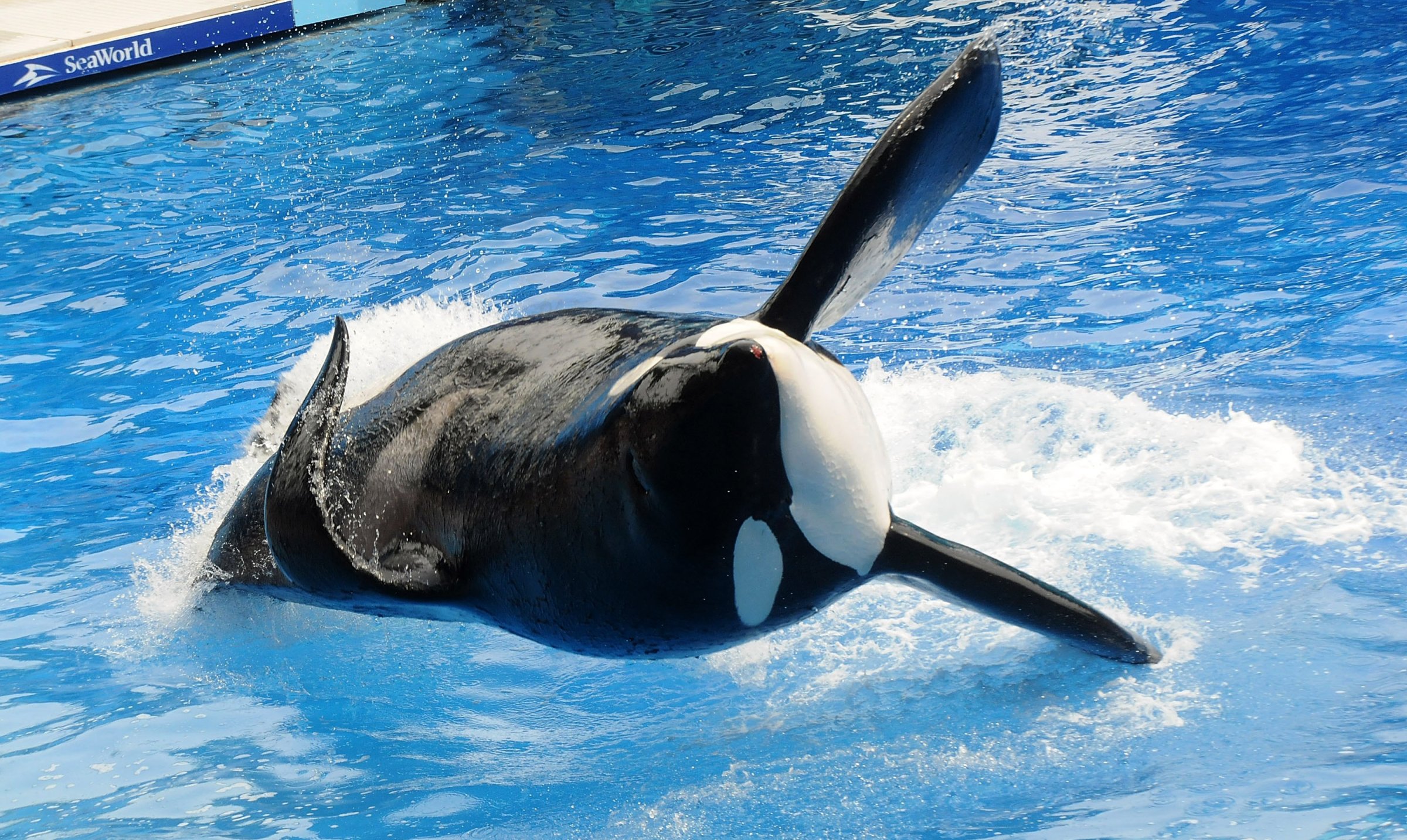
Tilikum—an orca who was imprisoned at SeaWorld for nearly three decades and was the “star” of the damning documentary Blackfish—finally has his freedom. But he shouldn’t have had to die to get it.
Caring people worldwide have urged SeaWorld to release Tilikum and the other orcas languishing in its tiny concrete tanks into coastal sanctuaries, where they could enjoy some semblance of the life that has been stolen from them. But the company has staunchly refused. Instead, it feeds the public lines about “family“—but families don’t keep their members in tiny, barren spaces for life and exploit them for decades to make a buck.
When Tilikum was just two years old, marine “cowboys,” who kidnap orcas to sell to amusement parks, took him from his real family—his pod—in the open waters off Iceland. For the rest of his life, he was forced to live in tiny tanks and cramped enclosures, unable to use his echolocation, hear or see his relatives, swim long distances or do anything that resembled living naturally.
He was trained to eat what he was given and to do what he was told. He was also trained to roll over—so that marine park workers could masturbate him with a gloved hand and collect his semen in a container. SeaWorld used him as its chief sperm-producing machine, churning out more performers through artificial insemination. The company’s announcement that it would end its orca-breeding program came too late for Tilikum, who was bred 21 times. Eleven of his offspring died before he did.
He was kept in tanks with no escape from aggressive, incompatible orcas, who often left him torn up and bloodied. The constant stress and deprivation drove him to lash out. He killed three humans—including trainer Dawn Brancheau in 2010—and wore down his teeth to nubs by gnawing on the underwater bars of his prison. Confined to an enclosure that was, to him, the size of a bathtub, he slowly lost his mind. Finally, his body gave out as well.
Tilikum died in an artificial environment where he did not belong. He never again felt the waves and tides or knew the joy of swimming with his family and exploring the vast ocean. His miserable life is over, but there’s still a chance for the other animals trapped at SeaWorld—including his ten surviving offspring. The company can and must immediately begin a plan to rehabilitate and return all the orcas, beluga whales, bottlenose dolphins, sea lions, walruses, penguins and others back to nature or release them into coastal sanctuaries.
Dying should not be the only way that animals imprisoned at SeaWorld get to escape their tanks.
More Must-Reads from TIME
- Donald Trump Is TIME's 2024 Person of the Year
- Why We Chose Trump as Person of the Year
- Is Intermittent Fasting Good or Bad for You?
- The 100 Must-Read Books of 2024
- The 20 Best Christmas TV Episodes
- Column: If Optimism Feels Ridiculous Now, Try Hope
- The Future of Climate Action Is Trade Policy
- Merle Bombardieri Is Helping People Make the Baby Decision
Contact us at letters@time.com